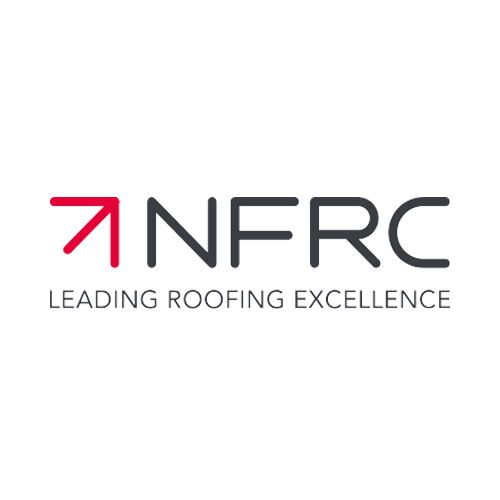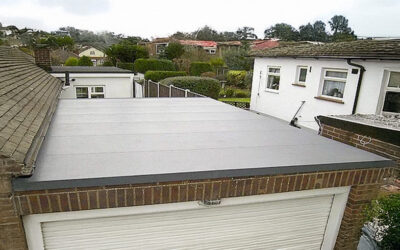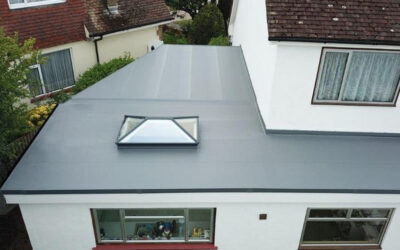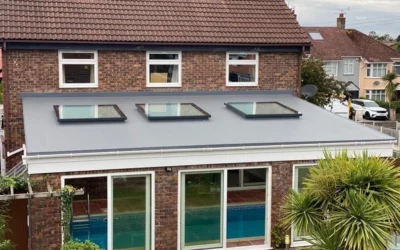The hot weather can damage a flat roof.
Homeowners automatically worry about winter downpours as their flat roof begins to approach its expiry date.
The truth is summer can be just as damaging to a deteriorating flat roof, especially those made of traditional materials such as felt or bitumen.
In fact, many of the weaknesses and stresses placed on flat roofs during hot weather could be the ultimate downfall of the roof during heavy rain in the winter.
It’s advisable to ask a professional to check your flat roof at the end of a long hot summer to assess any damage. It is possible to repair isolated problems however if your flat roof has past or is approaching its expiry date then the most cost-effective solution is replacement.
Here are five problems to look out for this summer:
Blistering
When water penetrates felt through a crack or hole and is heated all day by the sun it expands and can lift the felt from the roof. This results in blisters or bubbles. If caught early, it is possible to replace sections of felt however as time goes on it’s more sensible to opt for replacement. Blistering should never be ignored as it can quickly lead to a bigger problem.
Thermal movement
An ongoing cycle of heating and cooling during the summer months can cause traditional-style flat roofs to expand and contract, which can allow water to penetrate into the roof. Modern materials such as single-ply PVC membrane roofing is engineered to form a 100% watertight covering that withstands the tests of the elements. This roofing is made from breathable single-ply PCV, which means it is unaffected by condensation.
Flashing damage
Flashing damage is often caused by fungal growth from moisture build up. This growth can be more accelerated when there are plenty of sunlight hours so it’s worth giving them an inspection to identify any areas that require repairs. Drainage is vital for the long-term health of a roof and if it is compromised by damaged flashing, then in time the flat roof will begin to fail.
Improper or inadequate installation
Heat-related problems are much worse when the original installation was flawed. This increases the probability of accelerated sun damage. Many flat roofs are too flat or built with inferior structural materials which cause them to sag in the middle thus allowing rainwater to pool. This will soon find its way through any crack or hole, caused by the sun heating up the surface or expansion and contraction. If you are considering replacing your flat roof, ensure you opt for a supplier that offers a superior guarantee for the work completed.
Standing water
The British summer is typically unreliable and most years we see at least some flash flooding in some parts of the country. Taking this into account, it’s appropriate to discuss the dangers of standing water as this is one of the primary causes of flat roof leakages. If water doesn’t drain or evaporate from your flat roof within 72 hours, it will begin to cause damage. Usually, problems with standing water are caused by insufficient drainage or the fact that the roof is too flat. An inspection is a good idea during winter or spring to assess whether this is likely to be an issue.
Damage can be rapid or take years to become a problem, depending on the age of your flat roof. The best way of avoiding a leak is to have it regularly inspected. This will allow minor problems to be corrected before they get worse.




















